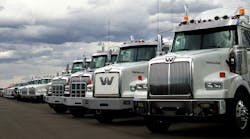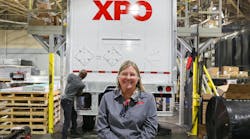Supreme lands Budget deal
Truck body builder Supreme Industries has been awarded a new fleet contract by Budget Truck Rental, valued in excess of $10 million, for 1,850 dry freight vehicles. Production, which began during the fourth quarter of last year, will continue through June 2008.
The vehicles will be made using cabover and cutaway chassis from General Motors, as well as chassis manufactured by International Truck & Engine Corp.
Ford addresses long-term environmental impact
Final assembly will take place at Supreme facilities across the country, including Jonestown, PA, Griffin, GA, Goshen, IN and Moreno Valley, CA.
Ford Motor Co. is creating a “sustainability” strategy that will lessen the overall impact of its motor vehicles on the environment. Intended to guide the company through 2020, the strategy serves as a road map of both near- and long-term technological changes for its products to improve fuel economy, reduce pollution, address climate change and bolster energy security.
The cornerstones of the strategy include a new generation of fuel-saving, turbo-charged, gasoline engines for lighter vehicles, weight reductions of 250 to 750 lb., fuel-saving transmissions, advanced electric power steering, aerodynamic improvements, plus more hybrid offerings and diesel enginesfor light-duty vehicles.
“While we are implementing our near-, mid- and long-term plans, we are continuing to achieve efficiencies throughout the vehicle in areas that can quickly lead to fuel economy improvements today,” notes Derrick Kuzak, Ford's group vp for global product development. “We continue to make improvements in what we call the ‘1%’ areas — items such as reducing wind drag, eliminating engine-driven power steering pumps and switching to low-friction engine oil. Collectively, these small improvements deliver significant fuel economy gains for our customers.”
As an example, Kuzak cites the F-250 Super Duty, where fuel efficiency has been increased by more than 1 mpg simply by reducing aerodynamic drag and optimizing gearing.


